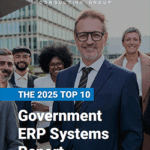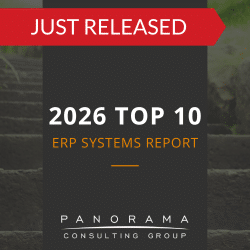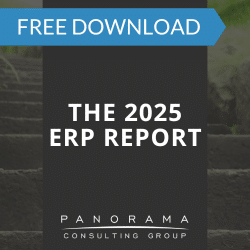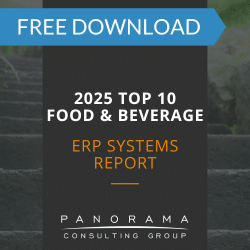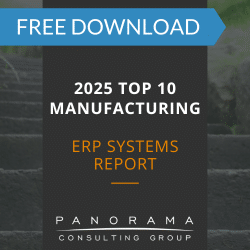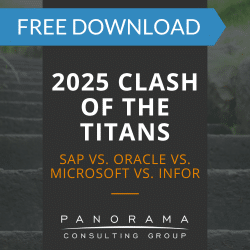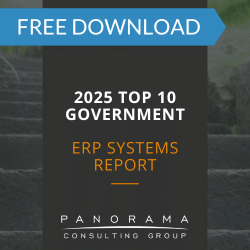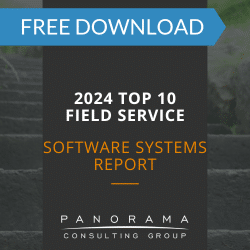- Succession planning is increasingly linked to digital transformation outcomes, especially in industries with high tenure and undocumented processes.
- Tribal knowledge transfer plays a critical role in ERP success, yet most organizations lack a structured knowledge management strategy.
- AI tools can assist with knowledge capture, but their limitations in understanding human context, judgment, and exceptions make human-led processes essential.
Executive conversations about digital transformation usually focus on scale, efficiency, and customer experience. Yet beneath those priorities, a slow-moving threat is gaining momentum: experienced employees are retiring and with them retires critical workforce knowledge.
Across industries—particularly manufacturing and utilities—we’re seeing multi-decade tenure employees retire without ever being asked to articulate what they know or how they make decisions.
Worse, digital transformation projects rarely address how retiring employees will impact process continuity and system adoption.
This post explores what happens when digital transformation runs parallel to a retiring workforce—and why that intersection requires a new knowledge management strategy.
The 2025 ERP Report
72.6% of respondents said they've already deployed AI at their organizations. Learn about AI adoption and other ERP trends by downloading our latest report.
Identifying Hidden Knowledge Risk Across the Organization
You won’t find “tribal knowledge gaps” on a balance sheet, but if you’ve ever tried to replace a plant supervisor with 30 years of experience, you understand the cost of retirement.
Here are five ways to uncover where workforce retirement is threatening your digital foundation:
1. Map longevity—not titles.
Organizations tend to focus on succession planning for executives or senior managers, but institutional memory often lives elsewhere.
For example, a scheduler who has memorized ten years of order patterns has operational foresight that no forecasting algorithm can fully replicate.
We recommend identifying tenure clusters across the business by level, function, and system dependency. Then, cross-reference that with process ownership to pinpoint areas where a single person’s departure would create operational blind spots.
2. Audit process dependence on people vs. systems.
The more a process relies on informal workarounds or manual interventions, the higher the knowledge risk.
Look for roles where people are “the system”—the roles where people adjust for bad data, reinterpret policy, or bridge the gap between what’s documented and what works.
Industry-specific examples include:
- A production supervisor at a food and beverage company who adjusts batch sizes on the fly to account for ingredient variability and real-time quality feedback—without updating the system or logging those decisions.
- A warehouse lead in distribution who memorizes space constraints and overrides automated picking sequences.
- A controller in a professional services firm who manually allocates shared expenses based on client nuances that no tool has been configured to handle.
3. Build a heatmap of retirement eligibility.
HR systems can usually flag who’s within 3–5 years of eligibility. Overlay that with process ownership, and you’ll be able to see convergence points where risk is compounding.
Our ERP consulting team often sees this risk in clients’ finance departments, plant operations, and customer service centers—functions where turnover disrupts both workflow execution and cross-department communication.
4. Don’t overlook support functions.
Facilities, IT, internal audit—these teams often have embedded knowledge that may have never been formalized.
For example, many IT departments still rely on one person who “knows where everything lives” on legacy servers. This kind of undocumented knowledge creates risk, especially during cloud ERP migrations, where system architecture, access protocols, and historical configurations must be replicated—often without the person who originally built or maintained them.
5. Test assumptions with people closest to the work.
Before redesigning processes or implementing ERP modules, we recommend interviewing front-line users and mid-level supervisors.
Ask them what the system doesn’t capture. Their responses will uncover critical areas to document, such as:
- Unwritten rules
- Undocumented naming conventions
- Exception-driven decision points
- Subtle handoffs between departments
Can AI Capture Knowledge from Retiring Employees?
Artificial intelligence (AI) can summarize documentation, analyze standard operating procedures (SOPs), and answer questions based on internal knowledge bases. So the question arises: can AI help you preserve tribal knowledge?
While AI can help capture fragments of what people do, it struggles to grasp why they do it—or how decisions get made when real-life complexity doesn’t match the documented process.
Here are three limitations executives should keep in mind as they explore AI-driven knowledge capture:
1. AI reflects existing documentation—it doesn’t create insight.
If a process hasn’t been fully documented with exceptions, decision points, and workarounds, AI can’t produce a reliable version of that process for your ERP requirements.
Without intentional effort to surface these unwritten practices, AI will formalize the visible half of the process and discard the half that actually makes it work.
Even when it detects patterns—like a policy being overridden ten times—it has no understanding of why that happened. Was it poor design? Operational urgency? Good judgment under pressure?
Most importantly, should that same reasoning be applied going forward?
2. AI depends on structured inputs—but most tribal knowledge is unstructured.
Voice notes, hallway conversations, whiteboard sketches, shortcuts passed down informally—these are the fragments that hold companies together.
If you don’t make a deliberate effort to extract trivial knowledge through interviews, observation, and structured handoffs, it will be invisible to AI.
For example, a utility provider might rely on AI to organize SOPs for outage response without using it to capture the call routing workarounds dispatchers use during storms. This would create a false sense of preparedness—while the knowledge that keeps the system running during a crisis remains undocumented.
3. AI can’t validate what’s useful versus what’s noise.
Employees tend to filter out irrelevant details instinctively. In contrast, AI captures everything—useful or not.
Without human input to prioritize and interpret, there’s a risk that the system will elevate noise—like obsolete procedures or one-off anomalies—while overlooking the small, consistent actions that drive operational performance.
Expert Insight
This doesn’t mean AI has no place in tribal knowledge transfer. Used strategically, it can support your digital transformation strategy, especially when paired with structured interviews, shadowing, and cross-functional handoffs.
For example, you might schedule interviews with retiring employees to document how they handle complex, exception-driven tasks. Then, an AI tool could transcribe those interviews, summarize key themes, and flag decision points that show up repeatedly. This could inform training materials, ERP workflow design, and internal playbooks for new hires.
Learn about our AI Readiness services.
Modernizing Tribal Knowledge
Preserving tribal knowledge, especially for a software implementation, requires an approach that integrates knowledge capture into the transformation process itself. By embedding documentation into ERP configuration sessions and process design workshops, you can ensure that your new supply chain system, CRM software, or manufacturing ERP system is built on the right logic.
Here are four steps to move tribal knowledge from person to platform:
1. Integrate knowledge capture into ERP workflows.
Instead of asking employees to write SOPs in isolation, build prompts and documentation tasks into the project work itself.
For example, as you map out future-state processes during ERP design, ask participants to flag decision points that rely on memory or discretion. Then, use those as inputs for configuration logic, exception handling rules, and workflow routing.
2. Design training to teach judgment, not just tasks.
Many onboarding programs focus on “click here, select that.” But what matters more is understanding why a certain action is taken or when it should be avoided.
Scenario-based learning, paired with real-world examples from experienced team members, makes the difference between superficial knowledge transfer and an effective knowledge management strategy.
3. Factor digital readiness into succession planning.
The goal isn’t to find someone who does the job identically—it’s to find someone who understands how to work with your evolving tech stack.
We recommend matching critical roles with successors based on their ability to adapt, document, and iterate within the system—not just their functional expertise.
4. Ensure ERP systems reflect process reality.
ERP systems are often built around theoretical process flows, rather than lived business complexity. If a retiring employee’s workaround isn’t captured during configuration, the system may fail at go-live—or worse, prompt users to revert to spreadsheets.
We recommend engaging long-tenured employees early, especially when configuring workflows, alerts, and approval hierarchies.
Aligning Succession Planning and Digital Transformation
What do your retiring employees know that your systems don’t?
One of the biggest risks to digital transformation success is losing the people who know how your business really works.
Our independent ERP consultants can help you develop a plan to preserve your employees’ tribal knowledge—before that knowledge walks out the door. Contact us for a free consultation.


